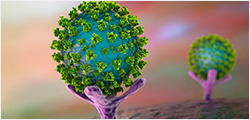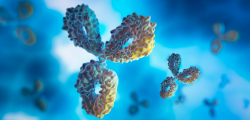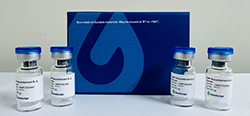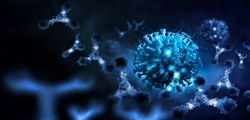| Species |
Human |
| Protein Construction |
VEGF-C/Flt4-L (Thr103-Arg227)_x000D_
Accession # Q6FH59 |
His |
Avi |
| N-term |
|
C-term |
|
| Purity |
> 95% as determined by Bis-Tris PAGE |
| Endotoxin Level |
Less than 1EU per μg by the LAL method. |
| Biological Activity |
Measured by its binding ability in a functional ELISA. Immobilized VEGF-C/Flt4-L, His & Avi, Human at 1μg/ml (100μl/well) on the plate can bind Human VEGF R3, hFc Tag. Test result was comparable to standard batch. |
| Expression System |
HEK293 |
| Theoretical Molecular Weight |
17.1 kDa |
| Apparent Molecular Weight |
Due to glycosylation, the protein migrates to 23-30 kDa based on Bis-Tris PAGE result. |
| Formulation |
Lyophilized from 0.22μm filtered solution in 50mM MES, 150mM NaCl (pH 6.0). |
| Reconstitution |
Centrifuge the tube before opening. Reconstituting to a concentration more than 100 μg/ml is recommended. Dissolve the lyophilized protein in 50mM MES, 150mM NaCl (pH 6.0). |
| Storage & Stability |
Upon receiving, the product remains stable up to 6 months at -20 °C or below. Upon reconstitution, the product should be stable for 3 months at -80 °C. Avoid repeated freeze-thaw cycles. |
| Target Background |
the lymphangiogenic factors vascular endothelial growth factor C (VEGFC) and VEGFD are cleaved by thrombin and plasmin, serine proteases generated during hemostasis and wound healing. Genetic studies reveal that platelet enhancement of lymphatic growth after wounding is dependent on the release of VEGFC, but not VEGFD, a finding consistent with high expression of VEGFC in both platelets and avian thrombocytes. |
| Synonyms |
VEGFC; VEGFc; Flt4-L; VRP; VEGF-C |
For research use only. Not intended for human or animal clinical trials, therapeutic or diagnostic use.




































